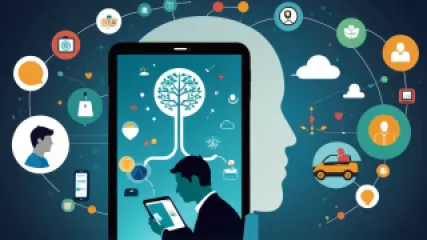How to Choose the Best Mental Health Apps for Your Needs
How to Choose the Best Mental Health Apps for Your Needs
In today's digital age, mental health apps have become a popular tool for individuals seeking support and guidance in managing their mental well-being. With a wide range of options available, it can be overwhelming to navigate through the various apps and choose the one that best suits your needs. In this tutorial, we will provide you with a step-by-step guide on how to choose the best mental health app for your specific requirements.
Step 1: Identify Your Needs
The first step in choosing a mental health app is to identify your specific needs and goals. Reflect on the areas of your mental health that you would like to focus on, such as anxiety, stress management, depression, mindfulness, or sleep improvement. Understanding your needs will help narrow down the options and find an app that aligns with your objectives.
Step 2: Research and Reviews
Once you have identified your needs, conduct thorough research on different mental health apps available in the market. Look for reputable sources that provide reviews and ratings for these apps. Take note of the features, user-friendliness, credibility, and effectiveness of each app. Reading reviews from individuals who have used the app can give you valuable insights into its pros and cons.
Step 3: Consider Professional Recommendations
Consult mental health professionals, such as therapists, counselors, or psychiatrists, for their recommendations on mental health apps. These professionals have experience working with various tools and can provide valuable insights into which apps are effective and reliable. They may also suggest apps that complement the therapy or treatment you are receiving.
Step 4: Assess Privacy and Security
Privacy and security should be top priorities when choosing a mental health app. Ensure that the app you select has strong data protection measures in place to safeguard your personal information. Look for apps that adhere to privacy regulations, provide clear terms of service, and have a transparent data usage policy. Additionally, check if the app encrypts data transmission and offers secure login options.
Step 5: Evaluate User Experience
User experience plays a significant role in the effectiveness and engagement of a mental health app. Consider factors such as the app's interface, ease of navigation, and overall design. An intuitive and user-friendly app is more likely to keep you engaged and motivated to use it regularly. Look for apps that offer a seamless experience with clear instructions and accessible features.
Step 6: Test Free Trials
Many mental health apps offer free trials or basic versions that allow you to explore the app before committing to a paid subscription. Take advantage of these trial periods to test the app's functionalities and assess if it meets your expectations. Pay attention to how the app addresses your needs, whether it provides relevant content, and if it resonates with your preferred learning style.
Step 7: Check App Ratings and Feedback
App ratings and user feedback are valuable indicators of an app's quality and effectiveness. Check the app store ratings and read user reviews to gain insights into other people's experiences. Positive ratings and reviews indicate that the app has helped users and is worth considering. Conversely, negative reviews may highlight potential issues or limitations you should be aware of.
Step 8: Consider Additional Features
While the primary focus is on the core features related to your mental health needs, consider any additional features that may enhance your experience. Some apps offer features like tracking mood or sleep patterns, providing educational resources, or connecting with a supportive community. Evaluate whether these additional features align with your preferences and would be beneficial to your mental health journey.
Step 9: Cost and Accessibility
Consider the cost and accessibility of the app before making a final decision. Some apps have a one-time purchase fee, while others require monthly or annual subscriptions. Take into account your budget and the value you expect to gain from the app. Additionally, check if the app is available on your preferred device (iOS, Android) and if it offers cross-platform syncing for convenience.
Step 10: Trust Your Instincts
After considering all the factors mentioned above, trust your instincts and choose an app that resonates with you. Each person's mental health journey is unique, and what works for someone else may not necessarily work for you. Select an app that feels right and aligns with your values, preferences, and goals.
Summary
Choosing the best mental health app for your needs requires careful consideration of your specific requirements, thorough research, and user feedback. Identifying your needs, consulting professionals, assessing privacy and security, evaluating user experience, testing free trials, checking ratings and feedback, considering additional features, and weighing the cost and accessibility are all essential steps in the decision-making process. Remember to trust your instincts and select an app that aligns with your goals and preferences. Mental health apps can be powerful tools in supporting your well-being, and finding the right one can make a significant difference in your journey towards improved mental health.






